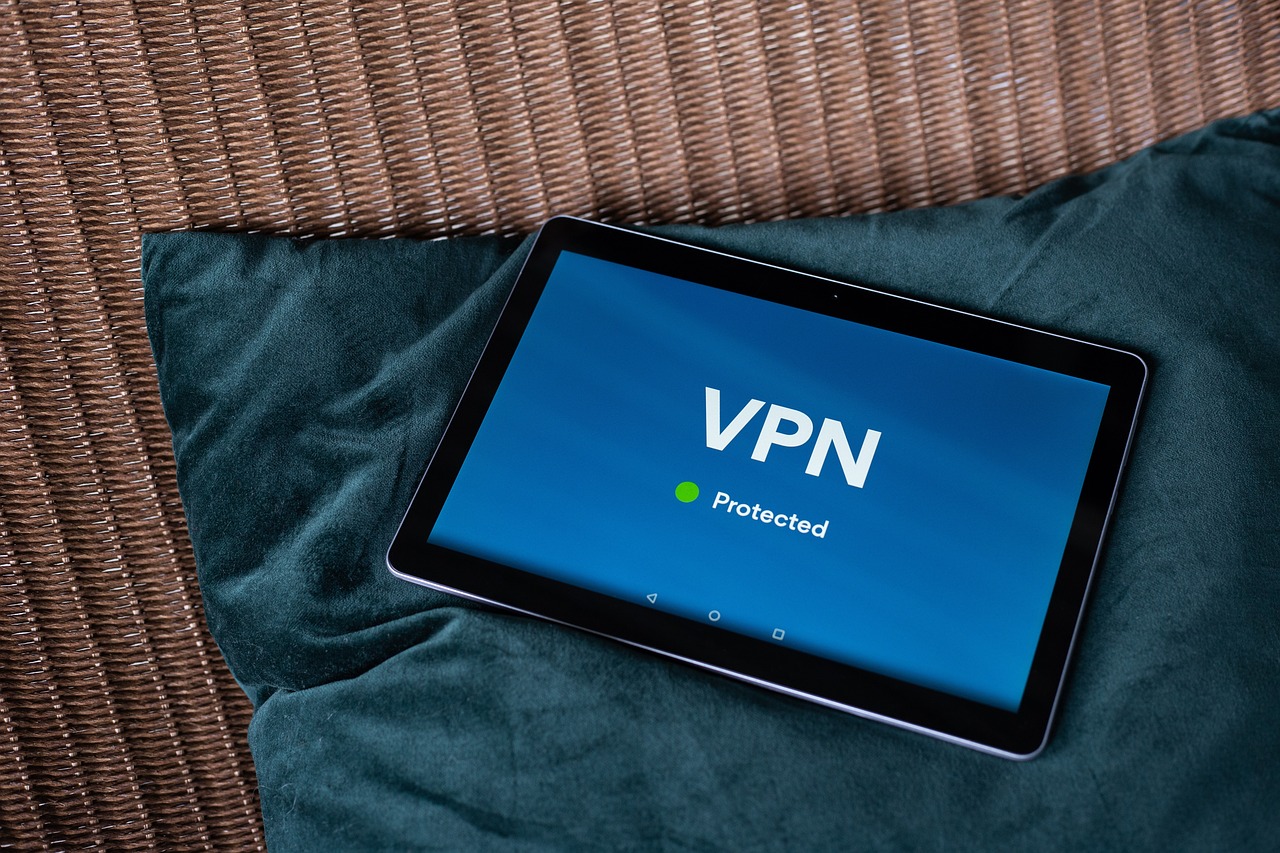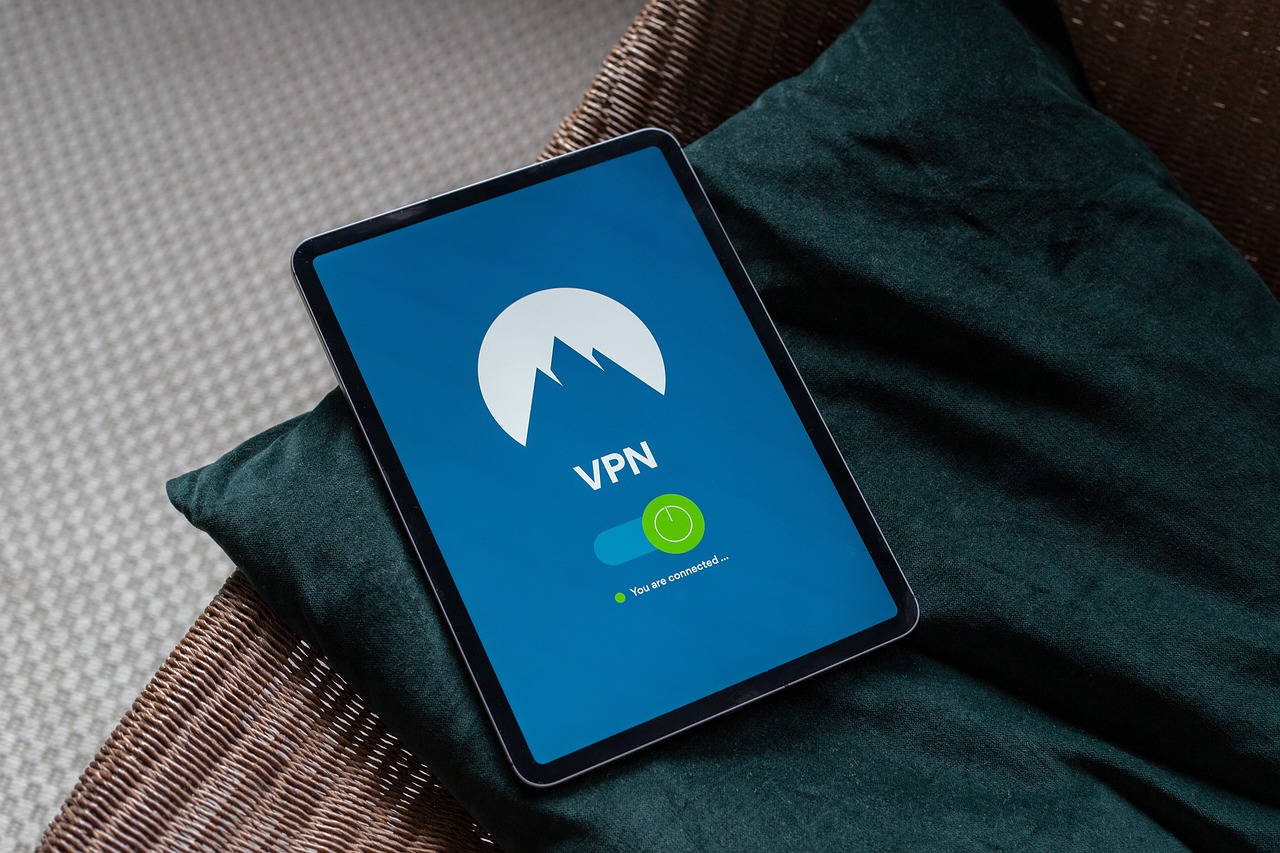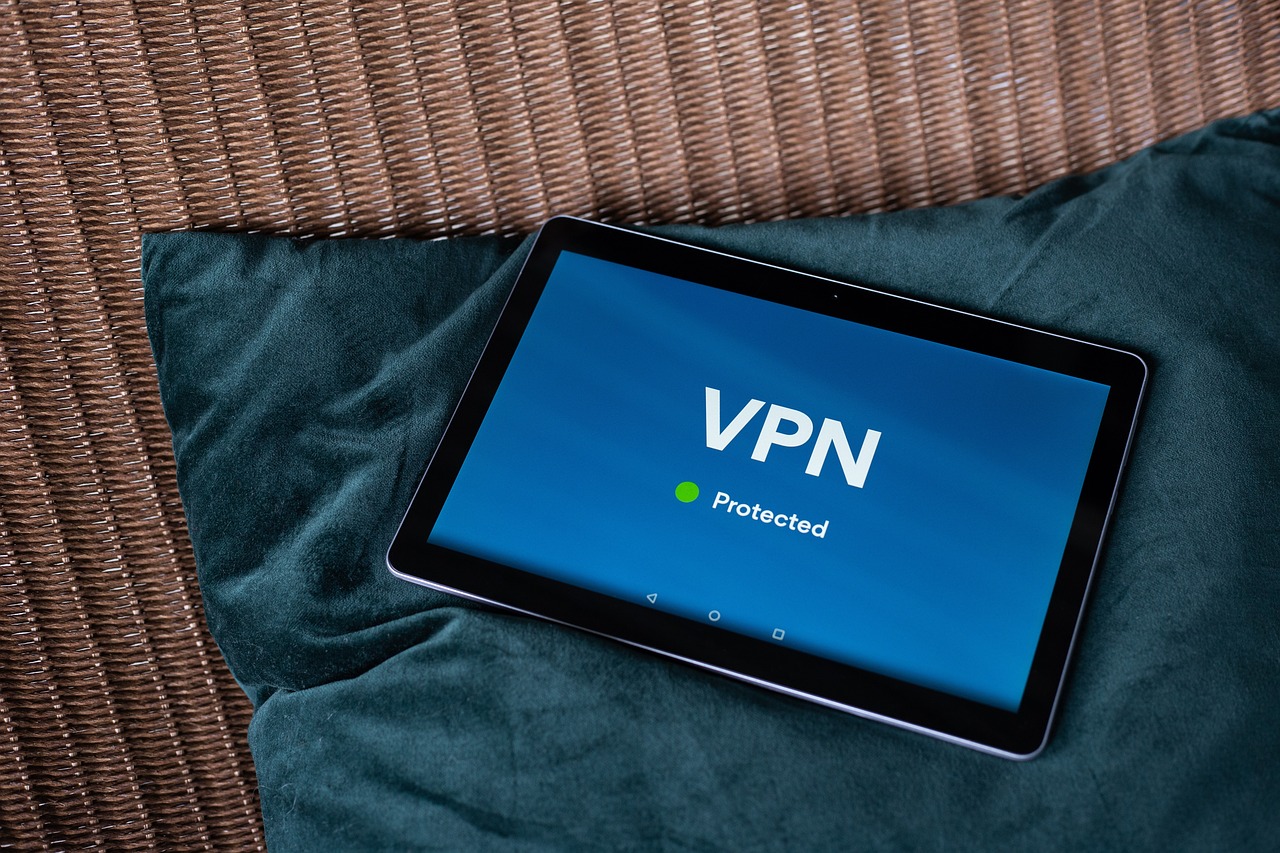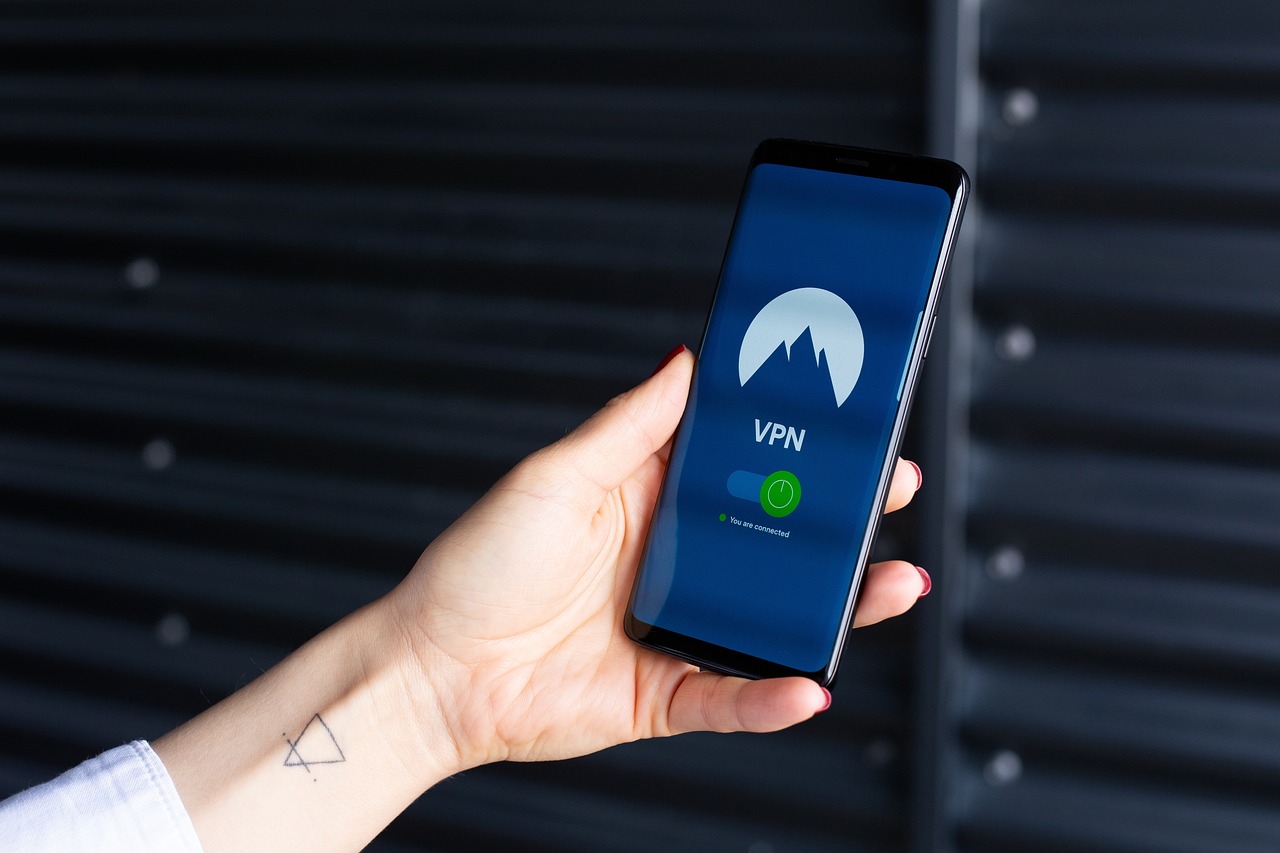Cybersecurity in the Public Sector - Challenges and Solutions
In today's digital landscape, cybersecurity has become a paramount concern for the public sector. With the increasing reliance on technology to deliver services, government organizations find themselves grappling with a myriad of cybersecurity challenges. From protecting sensitive citizen data to ensuring the continuity of essential public services, the stakes are incredibly high. The consequences of a cyber breach can be devastating, leading to financial losses, reputational damage, and even threats to national security. Therefore, understanding these challenges and implementing effective solutions is not just important; it is critical for the integrity of public sector operations.
One of the most significant challenges faced by public sector organizations is the ever-evolving landscape of cyber threats. Cybercriminals are becoming more sophisticated, employing tactics such as malware, phishing, and insider threats to exploit vulnerabilities. For instance, a single successful phishing attack can compromise sensitive information, leading to data breaches that affect thousands of citizens. Additionally, insider threats, whether malicious or unintentional, pose a unique challenge, as they often stem from trusted employees who have access to sensitive data. The potential impact of these threats on operations and data security cannot be overstated.
To combat these challenges effectively, public sector organizations must adopt a proactive approach to cybersecurity. This includes not only investing in advanced technologies but also fostering a culture of cybersecurity awareness among employees. Regular training, incident response planning, and security assessments are essential components of a robust cybersecurity strategy. By equipping employees with the knowledge and tools to recognize and respond to cyber threats, organizations can significantly mitigate risks and enhance their security posture.
Moreover, regulatory compliance plays a crucial role in shaping cybersecurity strategies within the public sector. Government entities are required to adhere to various regulations and standards, which dictate how they should manage and protect sensitive data. Understanding these compliance requirements is vital for avoiding penalties and ensuring that security frameworks are robust enough to withstand cyber threats. In the following sections, we will explore the specific regulations that govern cybersecurity practices in the public sector and discuss best practices for building a resilient cybersecurity culture.
- What are the main cybersecurity threats faced by the public sector? Public sector organizations commonly face threats such as malware, phishing attacks, and insider threats.
- How can public organizations improve their cybersecurity posture? By implementing regular employee training, incident response planning, and conducting security assessments.
- What regulations must public sector entities comply with regarding cybersecurity? Key regulations include GDPR, FISMA, and various federal and state guidelines.
- Why is a cybersecurity culture important? A strong cybersecurity culture fosters awareness and accountability among employees, enhancing overall security resilience.

Understanding Cybersecurity Threats
In today's digital landscape, the public sector is increasingly becoming a prime target for cybercriminals. With sensitive information at stake, understanding the various cybersecurity threats is crucial for government organizations. These threats can range from sophisticated malware to simple yet effective phishing attacks, each posing significant risks to data integrity and operational continuity.
One of the most prevalent threats is malware, which includes viruses, worms, and ransomware. Malware can infiltrate systems through seemingly innocuous email attachments or downloads, wreaking havoc by corrupting data or locking users out of their systems until a ransom is paid. Imagine waking up to find that all your critical files are encrypted, and the only way to access them is to pay a hefty sum to a faceless hacker. This nightmare scenario is becoming all too common in the public sector.
Another major threat is phishing attacks, which trick employees into divulging sensitive information, such as passwords or financial details. These attacks often masquerade as legitimate communications from trusted sources, making them particularly insidious. For instance, a government employee might receive an email that appears to be from their IT department, asking them to verify their login credentials. If they fall for this trap, the attacker gains access to secure systems and sensitive data. To combat this, organizations must educate their employees about recognizing such threats and implementing stringent verification processes.
Furthermore, insider threats pose a unique challenge. These threats can arise from current or former employees who have access to sensitive information and may misuse it, either intentionally or unintentionally. Employees may not always realize the potential consequences of their actions, such as sharing passwords or failing to follow security protocols. This is where a strong cybersecurity culture becomes essential, as it fosters awareness and accountability among staff. Organizations should encourage open communication about security practices and create an environment where employees feel comfortable reporting suspicious activities.
To sum it up, the landscape of cybersecurity threats in the public sector is complex and evolving. Organizations must remain vigilant and proactive in their approach to security. By understanding the different types of threats—malware, phishing, and insider risks—public sector entities can develop effective strategies to mitigate these dangers. Regular training and awareness programs, coupled with robust security protocols, can significantly enhance their defenses against these ever-present threats.
- What is the most common type of cyber threat in the public sector? Malware and phishing attacks are among the most common threats faced by public sector organizations.
- How can organizations protect themselves from insider threats? Establishing a strong cybersecurity culture, along with regular training and clear communication, can help mitigate insider threats.
- Why is employee training important in cybersecurity? Employees are often the first line of defense against cyber threats; training them helps them recognize and respond to potential risks effectively.

Regulatory Compliance and Standards
In the ever-evolving landscape of cybersecurity, public sector entities face an intricate web of regulatory compliance and standards that shape their security strategies. These regulations are not just bureaucratic hurdles; they are essential frameworks designed to protect sensitive data and ensure the integrity of governmental operations. Compliance is paramount, as failure to adhere to these regulations can lead to severe penalties, legal repercussions, and a loss of public trust. So, what are the key regulations that govern cybersecurity in the public sector?
One of the most significant aspects of regulatory compliance is understanding the various federal and state regulations that dictate cybersecurity practices. For instance, the Federal Information Security Management Act (FISMA) mandates federal agencies to develop, document, and implement an information security program. This not only includes risk assessments but also the establishment of security controls to protect information systems. Additionally, state regulations can vary widely, often imposing their own requirements that public sector organizations must navigate. It's like trying to dance to multiple rhythms at once—challenging, but essential for harmony.
The landscape of federal and state regulations can be daunting. Federal regulations, such as the Health Insurance Portability and Accountability Act (HIPAA) and the Gramm-Leach-Bliley Act (GLBA), set stringent requirements for data protection, especially regarding sensitive personal information. Meanwhile, state regulations, like the California Consumer Privacy Act (CCPA), introduce additional layers of complexity, compelling public sector organizations to implement comprehensive data protection measures. This regulatory patchwork can create confusion, but understanding each layer is crucial for developing a robust cybersecurity strategy.
The General Data Protection Regulation (GDPR) has far-reaching implications for public sector organizations, particularly those handling data of EU citizens. This regulation emphasizes the importance of data protection and privacy, requiring organizations to implement stringent measures to safeguard personal data. For public sector entities, this means not only adjusting their data handling practices but also ensuring transparency and accountability. Compliance with GDPR can be a significant challenge, particularly for smaller organizations that may lack the resources to fully implement necessary changes. However, the benefits of compliance—such as enhanced trust from the public and reduced risk of data breaches—far outweigh the challenges.
As mentioned earlier, FISMA plays a pivotal role in shaping cybersecurity practices in the public sector. The NIST (National Institute of Standards and Technology) guidelines provide a comprehensive framework for managing cybersecurity risks. These guidelines help public sector organizations assess their security posture, implement appropriate controls, and continuously monitor their systems. By adhering to these frameworks, organizations can not only comply with federal mandates but also foster a culture of security that permeates their operations. It’s akin to building a fortress—each brick laid carefully to withstand potential threats.
In summary, navigating the maze of regulatory compliance and standards is no small feat for public sector organizations. However, embracing these regulations as opportunities rather than obstacles can lead to improved cybersecurity practices and greater public confidence. As the digital landscape continues to evolve, staying ahead of compliance requirements will be key to protecting sensitive data and ensuring the resilience of public sector operations.

Federal and State Regulations
When it comes to cybersecurity in the public sector, understanding is not just important—it's essential. These regulations serve as the backbone of cybersecurity practices, ensuring that government entities protect sensitive information and maintain trust with the public. Compliance with these regulations is crucial, as failing to adhere can lead to severe penalties, including hefty fines and reputational damage. So, what are some of the key regulations that public sector organizations must navigate?
At the federal level, the Federal Information Security Management Act (FISMA) is a pivotal regulation that mandates federal agencies to secure their information systems. It requires agencies to develop, document, and implement an information security program. FISMA emphasizes a risk management framework that aligns with the guidelines set forth by the National Institute of Standards and Technology (NIST). These guidelines provide a comprehensive approach to managing cybersecurity risks, covering everything from risk assessment to incident response.
On the state level, regulations can vary significantly, but they often mirror federal standards to some extent. For example, many states have adopted their own versions of data breach notification laws, which require organizations to inform affected individuals when their personal data has been compromised. Such laws not only aim to protect citizens but also promote transparency and accountability within public sector organizations.
Furthermore, the Health Insurance Portability and Accountability Act (HIPAA) is another critical regulation that applies to public sector organizations involved in healthcare. HIPAA sets the standard for protecting sensitive patient information, requiring entities to implement safeguards to ensure the confidentiality, integrity, and availability of electronic health information.
To illustrate the complexity of compliance, here’s a brief overview of some key federal and state regulations that public sector organizations must consider:
| Regulation | Focus Area | Key Requirements |
|---|---|---|
| FISMA | Federal Information Security | Develop and implement security programs; comply with NIST guidelines |
| HIPAA | Healthcare Data Protection | Ensure privacy and security of health information |
| State Data Breach Laws | Data Protection | Notify affected individuals of data breaches |
In addition to these regulations, public sector organizations must also stay informed about evolving laws and standards. As cyber threats continue to grow in sophistication, regulatory bodies are likely to update existing frameworks and introduce new regulations to address emerging challenges. This constant evolution means that compliance is not a one-time effort, but rather an ongoing commitment to enhancing cybersecurity measures.
Ultimately, adhering to federal and state regulations not only helps public sector organizations avoid penalties but also fortifies their cybersecurity posture. By prioritizing compliance, these organizations can better protect sensitive data and maintain the trust of the citizens they serve.
- What is FISMA? FISMA stands for the Federal Information Security Management Act, which requires federal agencies to secure their information systems through comprehensive risk management.
- How do state regulations differ from federal regulations? State regulations can vary significantly but often align with federal standards, focusing on local data protection needs and breach notification laws.
- Why is compliance important for public sector organizations? Compliance is crucial to avoid penalties and protect sensitive data, which in turn helps maintain public trust.

GDPR and Its Implications
The General Data Protection Regulation (GDPR) has fundamentally changed the landscape of data protection and privacy, especially for public sector organizations. Implemented in May 2018, this regulation mandates strict guidelines on how personal data should be collected, processed, and stored. For public sector entities, which often handle vast amounts of sensitive information, the implications of GDPR are profound and multifaceted.
At its core, GDPR aims to give individuals greater control over their personal data. This means that public sector organizations must now ensure that they have a legal basis for processing personal data, whether through consent, contractual necessity, or compliance with legal obligations. Failure to comply with GDPR can lead to hefty fines, reaching up to €20 million or 4% of the annual global turnover, whichever is higher. This creates a significant incentive for public organizations to prioritize compliance and data protection measures.
Moreover, GDPR emphasizes the importance of transparency and accountability. Public sector organizations are required to inform individuals about how their data is being used and to implement measures that protect this data from breaches or unauthorized access. This can involve:
- Conducting regular data protection impact assessments (DPIAs)
- Implementing robust data security measures
- Ensuring that third-party vendors are also compliant with GDPR standards
Another critical aspect of GDPR is the concept of data subject rights, which includes the right to access, rectify, and erase personal data. Public sector organizations must be prepared to handle requests from individuals wishing to exercise these rights, which can increase operational complexity. For instance, if a citizen requests access to their data, the organization must have efficient systems in place to retrieve and provide this information promptly.
Furthermore, GDPR imposes strict requirements regarding data breach notifications. In the event of a data breach, public sector organizations must notify the relevant supervisory authority within 72 hours and inform affected individuals without undue delay. This necessitates a well-developed incident response plan, which includes clear communication strategies and designated personnel responsible for managing such incidents.
In conclusion, the implications of GDPR for public sector organizations are extensive. They must not only comply with the regulation but also foster a culture of data protection and privacy. This involves continuous training for employees, regular audits of data practices, and a commitment to transparency and accountability. By embracing these changes, public sector organizations can not only avoid penalties but also build trust with the citizens they serve.
What is GDPR?
GDPR stands for General Data Protection Regulation, which is a comprehensive data protection law in the EU that governs how personal data should be handled.
Who does GDPR apply to?
GDPR applies to all organizations that process the personal data of individuals residing in the EU, regardless of where the organization is based.
What are the penalties for non-compliance with GDPR?
Penalties for non-compliance can reach up to €20 million or 4% of an organization’s annual global turnover, whichever is higher.
How can public sector organizations ensure compliance with GDPR?
Organizations can ensure compliance by implementing data protection policies, conducting regular audits, training employees, and establishing clear data handling procedures.

FISMA and NIST Guidelines
The Federal Information Security Management Act (FISMA) is a pivotal piece of legislation that mandates federal agencies to secure their information systems. It establishes a comprehensive framework for protecting government information, operations, and assets against natural or man-made threats. FISMA emphasizes the need for a systematic approach to security management, which is where the National Institute of Standards and Technology (NIST) comes into play. NIST provides a set of guidelines and standards that federal agencies must adopt to comply with FISMA. These guidelines are essential for establishing a robust cybersecurity posture and ensuring that sensitive data is adequately protected.
At its core, FISMA requires agencies to develop, document, and implement an information security program that includes risk assessments, security controls, and continuous monitoring. The NIST Special Publication 800 series serves as the foundation for these requirements, offering detailed guidance on various aspects of cybersecurity. For instance, NIST SP 800-53 outlines the security and privacy controls that organizations should implement to protect their information systems. This publication is particularly significant as it provides a catalog of security controls that can be tailored to meet the specific needs of different agencies.
Moreover, the NIST Cybersecurity Framework (CSF) further complements FISMA by providing a flexible, risk-based approach to managing cybersecurity risks. The CSF is designed to help organizations understand, manage, and reduce their cybersecurity risks, while also aligning their security measures with business objectives. By integrating FISMA requirements with NIST guidelines, public sector organizations can create a comprehensive cybersecurity strategy that not only meets compliance requirements but also enhances overall security resilience.
In essence, FISMA and NIST guidelines work hand in hand to create a structured approach to cybersecurity in the public sector. They help agencies identify vulnerabilities, implement necessary safeguards, and continuously monitor their security posture. This proactive stance is crucial in today’s digital landscape, where cyber threats are constantly evolving. By adhering to these guidelines, public sector organizations can not only comply with regulatory requirements but also foster a culture of security awareness and vigilance.
- What is FISMA? FISMA stands for the Federal Information Security Management Act, which requires federal agencies to secure their information systems.
- How does NIST support FISMA compliance? NIST provides guidelines and standards that federal agencies must follow to meet FISMA requirements, including the NIST Special Publication 800 series.
- Why are FISMA and NIST important for public sector cybersecurity? They establish a structured approach to managing cybersecurity risks, ensuring that sensitive data is protected and compliance is maintained.
- What is the NIST Cybersecurity Framework? The NIST CSF is a flexible framework that helps organizations manage and reduce cybersecurity risks while aligning security measures with business objectives.

Best Practices for Cybersecurity
In the ever-evolving landscape of cyber threats, public sector organizations must adopt best practices to fortify their cybersecurity posture. The stakes are high; a single breach can compromise sensitive information and disrupt essential services. So, what can government entities do to stay ahead of cybercriminals? Here are some pivotal strategies that can make a significant difference.
First and foremost, employee training is crucial. It's not just about having the latest technology; it's about ensuring that your team understands the risks associated with cybersecurity. Regular training sessions can empower employees to recognize phishing attempts, avoid suspicious downloads, and follow best practices for password management. Imagine your staff as the first line of defense; if they are well-informed, they can help thwart potential attacks before they escalate.
Another essential practice is to develop a robust incident response plan. Think of this as your organization's emergency exit plan for cyber incidents. In the event of a breach, having a clear, predefined strategy can significantly reduce the chaos and confusion that often accompanies such situations. This plan should outline the roles and responsibilities of team members, communication protocols, and recovery steps. Regularly testing this plan through simulations can ensure that your team is prepared when the unexpected happens.
Furthermore, conducting regular security assessments is vital. This includes vulnerability assessments and penetration testing to identify weaknesses in your systems. By proactively addressing these vulnerabilities, organizations can significantly reduce their risk exposure. Consider this akin to regular health check-ups; just as you would want to catch health issues early, identifying cybersecurity weaknesses before they are exploited is crucial.
Additionally, implementing multi-factor authentication (MFA) is a game-changer. MFA adds an extra layer of security by requiring users to provide two or more verification factors to gain access to systems. This is especially important for sensitive data and critical infrastructure. In a world where passwords can be stolen or guessed, MFA acts as a formidable barrier against unauthorized access.
Moreover, data encryption should not be overlooked. Encrypting sensitive data ensures that even if it falls into the wrong hands, it remains unreadable without the decryption key. This is particularly important for public sector organizations that handle personal data and confidential information. Think of encryption as a secure vault; even if someone breaks in, they won't be able to access the valuables inside without the right key.
Lastly, fostering a culture of accountability is essential. Leadership must take cybersecurity seriously and lead by example. When leaders prioritize security, it trickles down to all levels of the organization. Encourage open discussions about cybersecurity challenges and successes to create an environment where everyone feels responsible for maintaining security.
In summary, the best practices for cybersecurity in the public sector revolve around a combination of employee training, incident response planning, regular assessments, multi-factor authentication, data encryption, and fostering accountability. By implementing these strategies, organizations can build a resilient cybersecurity framework that not only protects sensitive data but also instills confidence in the public they serve.
- What is the most critical aspect of cybersecurity for public sector organizations?
Employee training is often considered the most critical aspect, as it equips staff to recognize and respond to potential threats effectively. - How often should organizations conduct security assessments?
Organizations should aim to conduct security assessments at least annually, but more frequent testing is advisable, especially after significant changes to the IT environment. - What role does leadership play in cybersecurity?
Leadership is vital in establishing a cybersecurity culture, promoting accountability, and ensuring that security initiatives are prioritized across the organization. - Is encryption necessary for all data?
While not all data may require encryption, any sensitive or personally identifiable information should be encrypted to protect it from unauthorized access.

Emerging Technologies and Cybersecurity
In today's fast-paced digital world, emerging technologies like artificial intelligence (AI) and cloud computing are not just buzzwords; they are reshaping the landscape of cybersecurity in the public sector. The integration of these technologies brings about a double-edged sword effect—on one hand, they offer innovative solutions to enhance security measures, while on the other, they introduce new vulnerabilities and challenges that public sector organizations must navigate carefully.
Take AI, for instance. It has the potential to revolutionize the way we approach cybersecurity. By utilizing machine learning algorithms, AI can analyze vast amounts of data to identify patterns and detect anomalies that might indicate a cyber threat. This automated threat detection can significantly reduce response times and improve the overall effectiveness of security protocols. However, there's a catch: the same technology that enhances security can also be exploited by cybercriminals to create more sophisticated attacks. This ongoing arms race between defenders and attackers means that public sector organizations must stay one step ahead, continuously adapting their strategies and tools.
Similarly, cloud computing has become an essential component for many public sector entities, offering flexibility, scalability, and cost savings. However, the transition to the cloud is not without its risks. Organizations must grapple with issues such as data breaches, loss of control over sensitive information, and compliance with regulatory standards. To mitigate these risks, it’s crucial for public sector organizations to implement robust cloud security measures. This includes adopting best practices such as:
- Data encryption: Ensuring that sensitive data is encrypted both in transit and at rest can protect it from unauthorized access.
- Access controls: Implementing strict access controls helps to limit who can view or manipulate sensitive data.
- Regular audits: Conducting regular security audits can help identify vulnerabilities and ensure compliance with regulatory standards.
Moreover, the integration of emerging technologies in cybersecurity strategies requires a shift in mindset. Organizations need to foster a culture of innovation and adaptability among their teams. As these technologies evolve, so too must the skills and knowledge of the workforce. Continuous training and development programs become essential to equip employees with the tools they need to effectively manage new technologies and respond to emerging threats.
In conclusion, while emerging technologies present significant opportunities for enhancing cybersecurity in the public sector, they also introduce complex challenges that require careful consideration and proactive management. By leveraging the benefits of AI and cloud computing while implementing stringent security measures, public sector organizations can strengthen their defenses and better protect sensitive data from the ever-evolving landscape of cyber threats.
Q: What role does AI play in cybersecurity?
A: AI enhances cybersecurity by automating threat detection and response. It analyzes large datasets to identify patterns that may indicate potential threats, allowing for quicker response times.
Q: What are the risks associated with cloud computing in the public sector?
A: Risks include data breaches, loss of control over sensitive data, and challenges in regulatory compliance, which can impact the security of cloud environments.
Q: How can public sector organizations mitigate cybersecurity risks?
A: Organizations can mitigate risks by implementing strong security measures, such as data encryption, access controls, and conducting regular security audits.

AI in Cybersecurity Defense
Artificial Intelligence (AI) is revolutionizing the landscape of cybersecurity, especially within the public sector. Imagine having a vigilant guard that never sleeps, constantly monitoring your digital assets for any signs of trouble. That's precisely what AI brings to the table. By utilizing advanced algorithms and machine learning techniques, AI can analyze vast amounts of data in real-time, identifying patterns and anomalies that would be nearly impossible for human analysts to catch. This capability not only enhances the speed of threat detection but also significantly reduces the response time to potential breaches.
One of the most compelling aspects of AI in cybersecurity is its ability to automate routine tasks. For instance, AI can handle repetitive processes such as log analysis and network traffic monitoring, freeing up cybersecurity professionals to focus on more complex issues. This automation leads to increased efficiency and allows teams to allocate their resources more effectively. However, it's essential to recognize that while AI can enhance defenses, it is not a silver bullet. Organizations must approach its implementation with a strategic mindset, ensuring that AI systems are integrated into a broader security framework.
Moreover, AI can also play a crucial role in predicting and preventing cyber threats. By employing predictive analytics, AI can assess vulnerabilities and forecast potential attack vectors, enabling public sector organizations to take proactive measures. This predictive capability is akin to having a weather forecast for cyber threats—allowing organizations to prepare for storms before they hit. However, the integration of AI comes with its own set of challenges, including the need for high-quality data and the risk of adversaries using AI to develop more sophisticated attacks.
To illustrate the impact of AI in cybersecurity, consider the following table that outlines common AI applications in this field:
| AI Application | Description |
|---|---|
| Threat Detection | AI algorithms analyze network traffic to identify and flag suspicious activities. |
| Incident Response | Automated systems can respond to threats in real-time, mitigating damage. |
| Phishing Detection | AI tools scan emails and websites for signs of phishing attempts. |
| Vulnerability Management | AI helps assess and prioritize vulnerabilities based on potential impact. |
In conclusion, while AI offers transformative potential for enhancing cybersecurity defenses in the public sector, it is vital to maintain a balanced approach. Organizations should invest in training their staff to work alongside AI tools, ensuring that human expertise complements automated systems. By fostering a collaborative environment between AI technologies and cybersecurity professionals, public sector organizations can create a robust defense strategy that not only addresses current threats but also adapts to the ever-evolving landscape of cyber risks.
- What is the role of AI in cybersecurity? AI enhances cybersecurity by automating threat detection, incident response, and vulnerability management, allowing organizations to respond more quickly to cyber threats.
- Can AI completely replace human cybersecurity professionals? No, while AI can automate many tasks, human expertise is still crucial for strategic decision-making and complex problem-solving.
- What are the challenges of implementing AI in cybersecurity? Challenges include the need for high-quality data, potential biases in AI algorithms, and the risk of adversaries using AI for more sophisticated attacks.
- How can organizations prepare for AI in cybersecurity? Organizations should invest in training their staff, integrate AI into their existing security frameworks, and continuously evaluate and adapt their AI strategies.

Cloud Security Considerations
As public sector organizations increasingly embrace the cloud for its flexibility and scalability, understanding becomes essential. The cloud offers numerous advantages, including cost savings and improved collaboration, but it also introduces unique risks that can jeopardize sensitive data and operational integrity. With the shift to cloud environments, organizations must prioritize security measures to protect their assets from potential threats.
One of the primary concerns is data privacy. When sensitive information is stored in the cloud, it is crucial to ensure that it remains confidential and is only accessible to authorized personnel. Public sector organizations often handle personal data, making compliance with regulations like GDPR even more critical. Failure to protect this data can lead to significant reputational damage and hefty fines.
Moreover, the shared responsibility model in cloud computing means that both the service provider and the organization share the responsibility for security. While cloud providers typically implement robust security measures, it's essential for public sector entities to understand their role in safeguarding data. This includes configuring security settings, managing user access, and continuously monitoring for suspicious activities.
To address these challenges, organizations should consider implementing the following key practices:
- Data Encryption: Encrypting data both in transit and at rest ensures that even if unauthorized access occurs, the data remains unreadable.
- Regular Audits: Conducting regular security audits can help identify vulnerabilities and ensure compliance with applicable regulations.
- Access Controls: Implementing strict access controls ensures that only authorized personnel can access sensitive information.
- Incident Response Plans: Having a well-defined incident response plan is crucial for quickly addressing any security breaches that may occur.
Furthermore, organizations should not overlook the importance of educating their workforce about cloud security. Employees must be aware of the potential risks associated with cloud usage and trained on best practices for maintaining security. This cultural shift towards cybersecurity awareness can significantly reduce the likelihood of human error, which is often a leading cause of security breaches.
In conclusion, while cloud computing offers transformative benefits for public sector organizations, it is imperative to approach it with a comprehensive security strategy. By understanding the unique challenges and implementing effective security measures, organizations can harness the power of the cloud without compromising their sensitive data.
1. What are the main security risks associated with cloud computing in the public sector?
The main security risks include data breaches, loss of data control, compliance violations, and insider threats. Organizations must be proactive in managing these risks to protect sensitive information.
2. How can public sector organizations ensure compliance with data protection regulations when using cloud services?
Organizations should implement strong security measures, conduct regular audits, and maintain clear documentation of data handling practices to ensure compliance with regulations like GDPR and FISMA.
3. What role does employee training play in cloud security?
Employee training is crucial in fostering a culture of security awareness. Regular training helps employees recognize potential threats and understand their responsibilities in protecting sensitive data.
4. How can organizations choose a secure cloud service provider?
Organizations should assess potential providers based on their security certifications, compliance with relevant regulations, data encryption practices, and overall reputation in the industry.

Building a Cybersecurity Culture
In today's digital landscape, where cyber threats loom large, building a cybersecurity culture within public sector organizations is not just beneficial; it's essential. Think of it like constructing a fortress: the walls alone won't keep invaders out; it's the vigilant guards, the fortified gates, and the constant training that make the fortress impenetrable. Similarly, a strong cybersecurity culture ensures that every employee, from the top brass to the newest intern, understands their role in safeguarding sensitive data and systems.
Creating this culture starts with awareness. Employees need to recognize that cybersecurity is not solely the IT department's responsibility. It's a collective effort that requires participation from everyone. Regular workshops, seminars, and interactive sessions can be instrumental in educating staff about the latest threats, such as phishing scams or ransomware attacks. When employees are informed, they become the first line of defense against potential breaches.
Furthermore, accountability is a cornerstone of a robust cybersecurity culture. Organizations should establish clear policies and guidelines that outline the responsibilities of each employee regarding data protection. This includes understanding what constitutes sensitive information and the proper protocols for handling it. By fostering a sense of ownership, employees are more likely to adhere to security practices, knowing that their actions can significantly impact the organization's overall security posture.
Another vital aspect of building a cybersecurity culture is the implementation of employee training programs. These programs should not be one-off events but rather ongoing initiatives that adapt to the evolving threat landscape. For example, incorporating gamified training modules can make learning about cybersecurity more engaging and less daunting. When employees are actively involved in their learning process, they are more likely to retain and apply that knowledge in real-world scenarios.
Moreover, leadership plays a crucial role in setting the tone for a cybersecurity culture. When leaders prioritize cybersecurity and demonstrate their commitment through actions—such as participating in training sessions or discussing cybersecurity in team meetings—it sends a powerful message to the entire organization. Leadership should also encourage open communication regarding cybersecurity concerns, making it clear that reporting potential threats or vulnerabilities is not only welcomed but expected.
To further enhance this culture, organizations can leverage technology to monitor compliance with cybersecurity policies. For instance, using software tools that track employee adherence to security protocols can provide valuable insights and highlight areas that need improvement. This data-driven approach not only strengthens security measures but also helps in tailoring training programs to address specific vulnerabilities.
In summary, building a cybersecurity culture in the public sector is not a one-time task but an ongoing commitment. It requires a multifaceted approach that emphasizes awareness, accountability, continuous training, and strong leadership. By fostering an environment where cybersecurity is a shared responsibility, organizations can significantly enhance their resilience against cyber threats.
- What is a cybersecurity culture? A cybersecurity culture refers to the shared values, beliefs, and practices within an organization that prioritize cybersecurity and data protection.
- Why is employee training important in cybersecurity? Employee training is crucial because it equips staff with the knowledge and skills necessary to identify and respond to cyber threats effectively.
- How can leadership influence cybersecurity culture? Leadership can influence cybersecurity culture by demonstrating commitment, promoting accountability, and encouraging open communication about security issues.
- What role does technology play in building a cybersecurity culture? Technology can help monitor compliance with cybersecurity policies and provide insights into areas that need improvement, thus enhancing the overall security posture.

Employee Training Programs
In the realm of cybersecurity, one of the most critical defenses against potential threats is the **human element**. Employees are often the first line of defense, and their actions can significantly impact an organization's security posture. Implementing comprehensive is essential for equipping staff with the knowledge and skills needed to recognize and respond to cybersecurity threats effectively. This training goes beyond just a one-time seminar; it should be an ongoing process that evolves with the changing landscape of cyber threats.
Effective training programs should cover a variety of topics, including but not limited to:
- Phishing Awareness: Employees should learn how to identify phishing attempts, which are one of the most common tactics used by cybercriminals to gain unauthorized access to sensitive information.
- Password Management: Training should emphasize the importance of strong, unique passwords and the use of password managers to keep accounts secure.
- Incident Reporting: Staff must understand the procedures for reporting suspicious activity or potential breaches, ensuring that any issues are addressed promptly.
Moreover, the training should incorporate real-life scenarios and simulations to provide employees with hands-on experience. This approach not only makes the training more engaging but also helps employees retain critical information. For example, conducting simulated phishing attacks can help employees practice their skills in a controlled environment, allowing them to learn from mistakes without the risk of actual data loss.
To measure the effectiveness of these training programs, organizations should implement regular assessments and feedback mechanisms. This could include quizzes after training sessions and periodic refresher courses to keep cybersecurity top-of-mind. Additionally, tracking the number of reported incidents before and after training can provide valuable insights into the program's impact.
Ultimately, fostering a culture of cybersecurity awareness within the organization is paramount. When employees feel empowered and knowledgeable about cybersecurity, they are more likely to take proactive measures to protect sensitive information. This cultural shift can significantly reduce vulnerabilities and enhance the overall security framework of public sector organizations.
Q1: How often should employee training programs be conducted?
A1: It's recommended to conduct training sessions at least twice a year, with additional refresher courses and updates whenever new threats are identified.
Q2: What are the key components of an effective cybersecurity training program?
A2: An effective program should include phishing awareness, password management, incident reporting procedures, and real-life scenario training.
Q3: How can organizations measure the success of their training programs?
A3: Success can be measured through assessments, feedback from employees, and tracking the number of reported incidents before and after training.

Leadership and Accountability
In the realm of cybersecurity, are not just buzzwords; they are the very backbone of a successful security strategy. Imagine a ship navigating through stormy seas without a captain. That’s what a public sector organization looks like without strong leadership guiding its cybersecurity efforts. Leaders must not only set the vision but also create a culture that prioritizes security at every level of the organization. This means fostering an environment where every employee feels responsible for protecting sensitive data and understanding the implications of their actions.
Accountability in cybersecurity goes hand in hand with leadership. It’s essential for leaders to establish clear roles and responsibilities when it comes to security practices. This clarity ensures that everyone knows what is expected of them and the consequences of failing to meet those expectations. For instance, if an employee falls victim to a phishing attack, the organization must analyze whether adequate training was provided and if the employee was equipped with the right tools to recognize such threats. This kind of introspection not only holds individuals accountable but also helps improve the overall security framework.
Moreover, leaders should actively participate in cybersecurity initiatives. Their involvement sends a strong message throughout the organization that cybersecurity is a top priority. Regularly scheduled meetings to discuss cybersecurity issues, updates on incidents, and reviews of security policies can help keep everyone engaged. When leaders are visibly committed to cybersecurity, it cultivates a culture of vigilance and proactive behavior among employees. In fact, organizations with strong leadership in cybersecurity are often more resilient against threats, as they have established protocols and a workforce that understands the importance of their role in maintaining security.
To further enhance accountability, organizations can implement a cybersecurity governance framework. This framework outlines the policies, procedures, and responsibilities related to cybersecurity. A well-defined governance structure helps ensure that cybersecurity is integrated into the overall business strategy, rather than being treated as an afterthought. Here’s a simple table illustrating key components of a cybersecurity governance framework:
| Component | Description |
|---|---|
| Policies | Establishes rules and guidelines for cybersecurity practices. |
| Roles & Responsibilities | Defines who is responsible for various cybersecurity tasks. |
| Risk Management | Identifies, assesses, and mitigates cybersecurity risks. |
| Incident Response | Outlines procedures for responding to security incidents. |
| Training & Awareness | Ensures employees are educated about cybersecurity threats and best practices. |
Ultimately, leadership and accountability in cybersecurity are about creating a sustainable and resilient security posture. It’s not just the responsibility of the IT department; it’s a shared commitment across the organization. By fostering a culture of accountability, where everyone understands their role in protecting sensitive information, public sector organizations can significantly enhance their cybersecurity measures. After all, in the battle against cyber threats, a united front is far more effective than isolated efforts.
- What role does leadership play in cybersecurity? Leadership sets the tone for cybersecurity culture and ensures that all employees understand their responsibilities.
- How can organizations promote accountability? By clearly defining roles, responsibilities, and implementing a governance framework.
- Why is a cybersecurity culture important? A strong culture promotes vigilance and proactive behavior, reducing the risk of successful cyber attacks.
Frequently Asked Questions
- What are the main cybersecurity threats faced by public sector organizations?
Public sector organizations encounter various cybersecurity threats, including malware, phishing attacks, and insider threats. These threats can severely impact operations and compromise sensitive data, making it crucial for organizations to stay vigilant and proactive in their cybersecurity measures.
- How do federal and state regulations impact cybersecurity in the public sector?
Federal and state regulations set specific requirements that public sector entities must follow to protect sensitive data. Compliance with these regulations helps organizations avoid penalties and establishes a robust security framework, ultimately enhancing their overall cybersecurity posture.
- What is the significance of GDPR for public sector organizations?
The General Data Protection Regulation (GDPR) imposes strict rules on data handling and privacy for public sector organizations. It requires them to implement measures that protect personal data and ensure transparency, which can be challenging but is essential for maintaining public trust.
- What best practices can public sector organizations adopt to improve cybersecurity?
To strengthen their cybersecurity, public sector organizations should implement best practices such as regular employee training, incident response planning, and conducting regular security assessments. These practices help create a resilient security environment and prepare organizations to respond effectively to potential threats.
- How can emerging technologies like AI enhance cybersecurity?
Emerging technologies, particularly artificial intelligence (AI), can significantly bolster cybersecurity defenses by automating threat detection and response. While AI offers numerous benefits, it also presents challenges that organizations must navigate to effectively integrate it into their security strategies.
- What are the key considerations for cloud security in the public sector?
As public sector organizations increasingly adopt cloud solutions, they must be aware of key security considerations, such as data protection, access controls, and compliance with regulations. Implementing best practices specific to cloud environments is crucial for safeguarding sensitive information.
- How can public sector organizations foster a cybersecurity culture?
Creating a strong cybersecurity culture involves promoting awareness, accountability, and proactive behaviors among employees. Regular training programs and leadership commitment are essential for instilling a culture that prioritizes cybersecurity and encourages everyone to take an active role in protecting sensitive data.
- What role does leadership play in establishing a cybersecurity culture?
Leadership is critical in establishing a cybersecurity culture within public sector organizations. Committed leaders can drive initiatives, allocate resources, and foster an environment where cybersecurity is prioritized, ensuring that all employees understand their responsibilities in maintaining security.



















